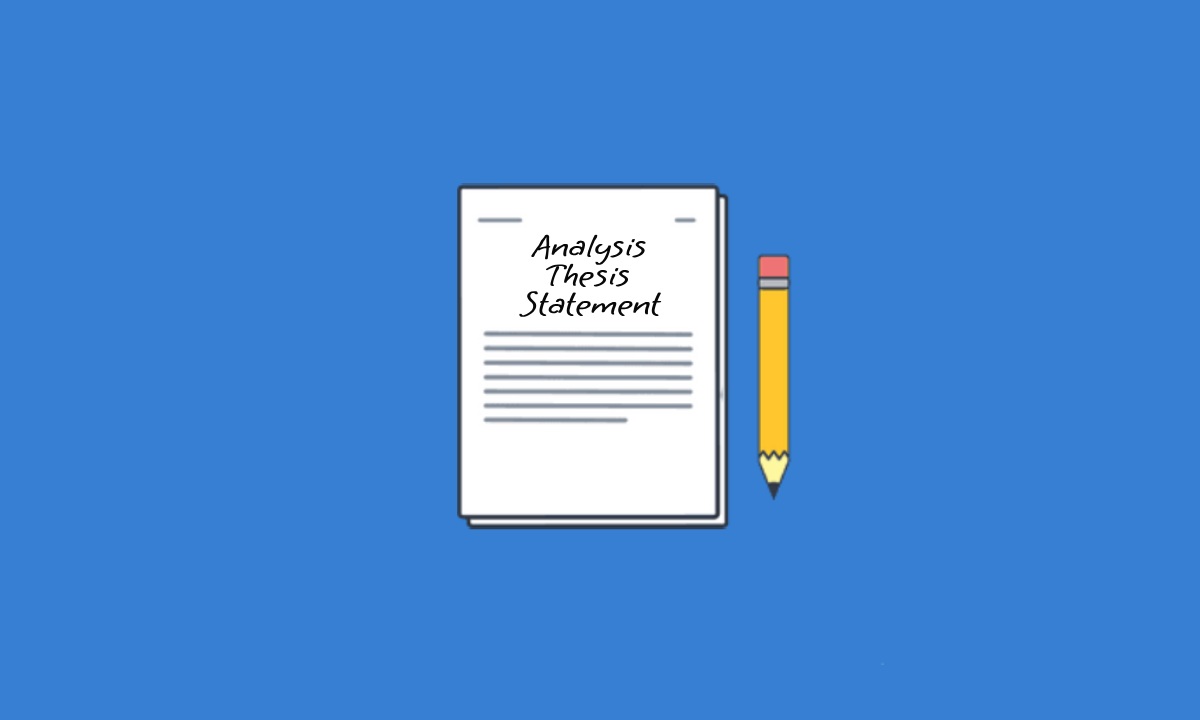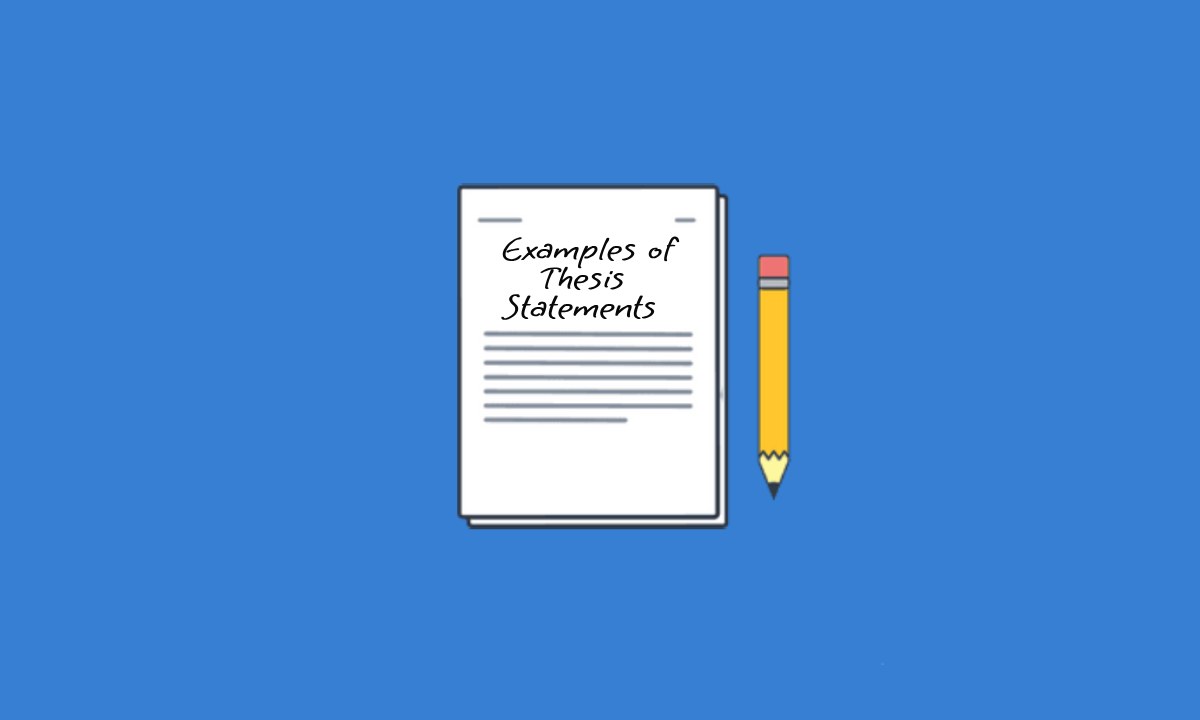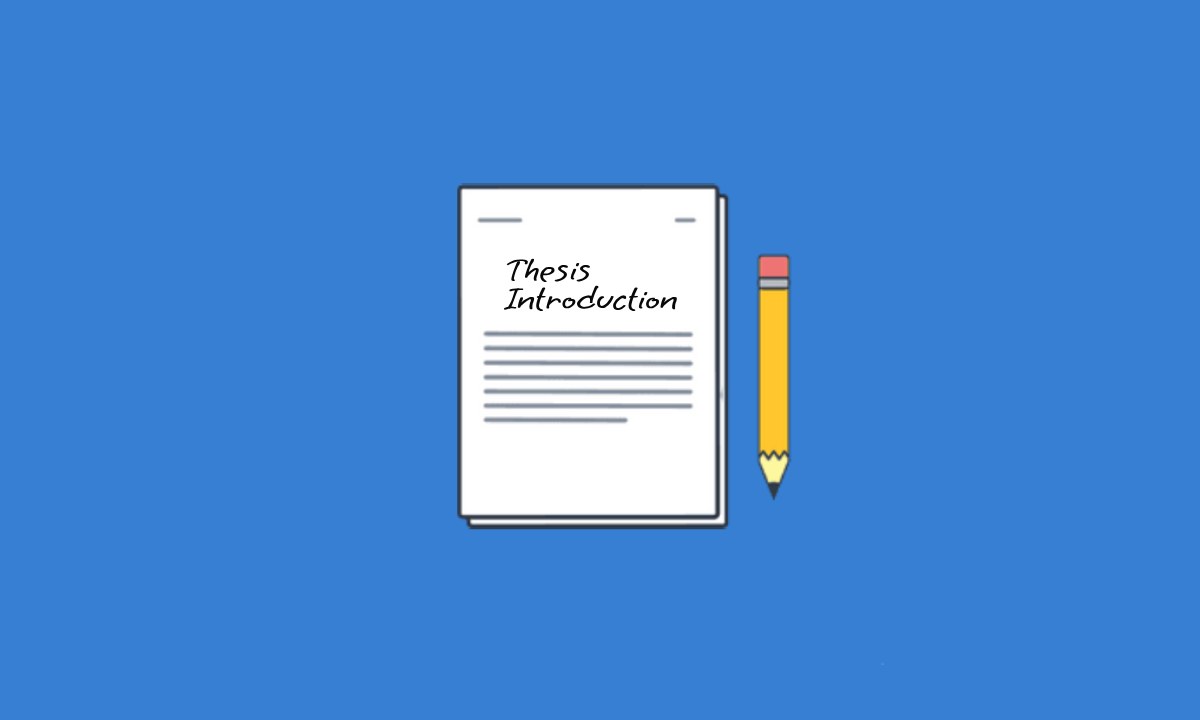What is Analysis Thesis Statement?
An analysis thesis statement is a sentence or group of sentences that presents the main argument or interpretation in an analytical essay or paper. It provides a specific claim about a text, concept, or issue, and sets the direction for the analysis by outlining the aspect(s) being examined, such as themes, characters, rhetorical strategies, or structure. The analysis thesis statement offers a debatable interpretation that will be supported by evidence from the source material throughout the analysis. It not only states what will be analyzed but also explains how and why the analysis is significant.
Types of Analysis Thesis Statements
There are various types of analysis thesis statements, each tailored to the specific type of analysis being conducted. Below are some common types:
Textual Analysis Thesis Statement
A textual analysis thesis statement presents a claim about the meaning or significance of a specific element (such as language, imagery, or theme) within a text. It focuses on how the text’s components contribute to its overall meaning.
Logical Analysis Thesis Statement
A logical analysis thesis statement evaluates the logical structure and coherence of an argument within a text. It examines whether the reasoning is sound and whether the conclusions are well-supported by evidence.
Critical Analysis Thesis Statement
A critical analysis thesis statement interprets a text through a specific critical lens (e.g., feminist, Marxist, or psychoanalytic). It analyzes how the text relates to broader social, political, or theoretical contexts.
Contextual Analysis Thesis Statement
A contextual analysis thesis statement examines a text in relation to the historical, cultural, or social circumstances in which it was produced. It connects the content of the text with the context to reveal deeper meanings or critiques.
Theoretical Analysis Thesis Statement
A theoretical analysis thesis statement applies a specific theoretical framework (e.g., structuralism, psychoanalysis, postmodernism) to interpret the meaning of a text. It explores how the theory enhances the understanding of the work.
Rhetorical Analysis Thesis Statement
A rhetorical analysis thesis statement focuses on how an author or speaker uses rhetorical strategies (ethos, pathos, logos) to persuade or inform an audience. It assesses the effectiveness of these techniques in achieving the intended purpose.
Character Analysis Thesis Statement
A character analysis thesis statement examines a character’s personality, motivations, relationships, and development throughout a text. It evaluates how the character contributes to the overall themes or narrative of the work.
Structural Analysis Thesis Statement
A structural analysis thesis statement evaluates how the organization and form of a text (e.g., narrative structure, use of flashbacks) influence its meaning and effectiveness. It examines how the structure shapes the reader’s understanding.
How to Write a Analysis Thesis Statement?
Below are the steps to write analysis thesis statement for each type:
Steps to Write Textual Analysis Thesis Statement
- Choose a specific aspect of the text (theme, symbol, tone, or literary device) to focus on.
- Identify how this element is used throughout the text.
- Determine the significance of this element to the overall meaning or message of the work.
- Combine these points into a clear, concise thesis.
Example: “In The Catcher in the Rye, Salinger uses the recurring symbol of the red hunting hat to represent Holden’s desire for individuality and protection from the adult world
Steps to Write Logical Analysis Thesis Statement
- Identify the argument or reasoning structure in the text.
- Analyze whether the argument follows a logical progression or contains fallacies.
- Assess how the logical flow supports or weakens the overall claim.
- Formulate a thesis that critiques the logic used.
Example: “The author’s argument for climate change policy reform is weakened by the reliance on slippery slope reasoning and the exclusion of relevant scientific data.”
Steps to Write Critical Analysis Thesis Statement
- Choose a critical lens (e.g., feminist, Marxist, postcolonial) to apply to the text.
- Identify key themes or moments in the text that relate to this lens.
- Analyze how the text supports or critiques the ideas of this critical perspective.
- Develop a thesis that reflects your interpretation.
Example: “A Marxist analysis of A Christmas Carol reveals how Dickens critiques the class disparity of Victorian England through Scrooge’s transformation from a symbol of capitalist greed to one of moral redemption.”
Steps to Write Contextual Analysis Thesis Statement:
- Research the historical, cultural, or social context of the text’s creation.
- Identify how these external factors influence the content or themes of the work.
- Consider how the text reflects or challenges its context.
- Write a thesis that connects the context to the text’s meaning.
Example: “By setting The Grapes of Wrath during the Great Depression, Steinbeck highlights the harsh realities of poverty and migration, serving as a critique of the American capitalist system.”
Steps to Write Theoretical Analysis Thesis Statement
- Choose a theoretical framework (e.g., psychoanalytic, structuralist, postmodern).
- Identify relevant elements of the text that can be interpreted through this theory.
- Analyze how the theoretical approach illuminates new meaning in the text.
- Develop a thesis that applies the theory to the text.
Example: “Freud’s theory of the unconscious is evident in Wuthering Heights, where Heathcliff’s actions represent repressed desires and unresolved trauma from childhood.
Steps to Write Rhetorical Analysis Thesis Statement
- Identify the rhetorical strategies (ethos, pathos, logos) used in the text.
- Determine how these strategies are used to achieve the author’s or speaker’s purpose.
- Analyze the effectiveness of these strategies in persuading the audience.
- Write a thesis that summarizes your analysis.
Example: “In his ‘Letter from Birmingham Jail,’ Martin Luther King Jr. uses ethos to establish his credibility, pathos to appeal to emotions, and logos to construct a logical argument for civil rights.”
Steps to Write Character Analysis Thesis Statement
- Choose a character to analyze and identify their traits, motivations, and development.
- Examine how the character’s actions and experiences affect the story.
- Analyze how the character reflects or challenges broader themes.
- Write a thesis that encapsulates your analysis.
Example: “In Pride and Prejudice, Elizabeth Bennet’s independence and wit challenge the social norms of her time, ultimately allowing her to transcend traditional gender roles.”
Steps to Write Structural Analysis Thesis Statement
- Identify the structure of the text (e.g., narrative structure, frame narrative, flashbacks).
- Analyze how this structure influences the pacing, themes, or character development.
- Consider how the structure supports or challenges traditional forms.
- Develop a thesis that explains the significance of the structure.
Example: “The fragmented narrative structure of Slaughterhouse-Five reflects the chaotic nature of war and time, illustrating how trauma distorts the protagonist’s perception of reality.”
Analysis Thesis Statement Examples:
Below are examples of different types of analysis thesis statements.
Textual Analysis Thesis Statement Examples:
- In 1984, George Orwell’s use of language manipulation by the Party reveals the dangers of totalitarian control over thought and perception.
- Shakespeare’s frequent use of soliloquies in Hamlet serves as a window into Hamlet’s psychological struggles and philosophical reflections.
- In The Great Gatsby, Fitzgerald’s symbolic use of the green light highlights Gatsby’s unattainable dream and the futility of the American Dream.
Logical Analysis Thesis Statement Examples:
- The argument presented in the article on climate change lacks logical consistency, as it ignores counter-evidence and relies heavily on emotional appeals rather than data.”
- In Descartes’ Meditations, his argument for the existence of God follows a logical progression but faces criticism for circular reasoning, especially in the ‘Trademark Argument.'”
- The debate on capital punishment often hinges on a logical fallacy known as ‘appeal to tradition,’ where proponents argue its validity based solely on its historical usage.”
Critical Analysis Thesis Statement Examples:
- Feminist critique of The Handmaid’s Tale uncovers the ways Atwood critiques patriarchy and the control of women’s bodies in a dystopian society.
- A Marxist analysis of A Christmas Carol reveals how Dickens critiques the class system and the unequal distribution of wealth in Victorian England.
- A postcolonial critique of Joseph Conrad’s Heart of Darkness exposes the text’s underlying Eurocentric bias and its problematic portrayal of Africa.
Contextual Analysis Thesis Statement Examples:
- Mark Twain’s The Adventures of Huckleberry Finn can be better understood within the context of post-Civil War America, where issues of race and freedom were contentious and heavily debated.
- Understanding the context of Victorian society is crucial when analyzing Charles Dickens’ Great Expectations, particularly in relation to class distinctions and the rise of industrialization.
- George Orwell’s Animal Farm reflects the historical context of the Russian Revolution and Stalin’s rise to power, using allegory to criticize totalitarian regimes and political corruption.
Theoretical Analysis Thesis Statement Examples:
- Applying Freud’s theory of the unconscious to Wuthering Heights suggests that Heathcliff’s behavior is driven by repressed desires and unresolved childhood trauma.
- Using Foucault’s theory of power relations, we can analyze how surveillance and control are enforced in Orwell’s 1984 to maintain authoritarian rule.
- Through the lens of postmodernist theory, Don DeLillo’s White Noise can be interpreted as a critique of consumerism and the saturation of media in modern life.
Rhetorical Analysis Thesis Statement Examples:
- In his I Have a Dream speech, Martin Luther King Jr. employs repetition, metaphor, and biblical allusions to inspire hope and advocate for racial equality.
- Barack Obama’s inaugural speech effectively uses pathos by invoking personal stories and American ideals to create a sense of unity and optimism.
- In Letter from Birmingham Jail, Martin Luther King Jr. strategically uses logos to justify the need for nonviolent protest in the fight against segregation.
Character Analysis Thesis Statement Examples:
- In To Kill a Mockingbird, Atticus Finch represents moral integrity and justice, serving as a moral compass for his children and the town of Maycomb.
- Jay Gatsby in The Great Gatsby is a complex character, driven by an idealistic vision of love and wealth that ultimately leads to his downfall.
- Lady Macbeth’s character in Macbeth transforms from a manipulative and ambitious woman to one overwhelmed by guilt and madness.
Structural Analysis Thesis Statement Examples:
- In Frankenstein, Mary Shelley uses a frame narrative structure to create layers of storytelling, enhancing the themes of isolation and perspective.
- The non-linear structure of Slaughterhouse-Five mirrors the fragmented and chaotic nature of the protagonist’s experience with war and time travel.
- James Joyce’s Ulysses employs stream-of-consciousness narration, which breaks conventional narrative structure to explore the inner workings of the human mind.



